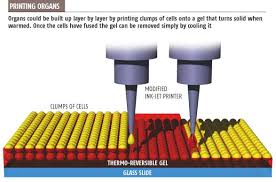
Autodesk recently announced that it’s teaming up with
bioprinting company Organovo to develop software that can design human
tissue to be printed out on 3-D printers. In the near future, the
printed organs are expected to be used in research. But down the line,
they could end up inside real, live humans—an alternative to today’s
inefficient organ donation process.
Organovo is known for creating the first commercial 3-D bioprinters
back in 2010; as of September 2012, the company had produced 10
bioprinters, each of which reportedly costs hundreds of thousands of
dollars. Created with technology from biophysicist Gabor Forgacs (he’s
also the co-founder of test tube meat and leather startup Modern
Meadow—and the father of the other cofounder, Andras Forgacs),
Organovo’s NovoGen MMX Bioprinter shapes cells—often stem cells from a
donor—into 3-D tissue that’s theoretically as good as anything created
by the human body. Clinical testing is still years away.

The partnership with Autodesk isn’t completely unexpected. Autodesk’s
Bio/Nano Programmable Matter research group collaborates with outside
researchers on design software’s role in biotechnology.

Hod Lipson, head of Cornell’s Creative Machines Lab, explained the
need for design software in organ printing in a Wall Street
Journalarticle: “We have machines that can make almost anything, but we
don’t have the design tools,” he said. “In bioprinting, there is no
computer-aided design software for body parts.”
As surgeon Anthony Atala demonstrated on the TED stage in 2011,
printable organs really aren’t that far from becoming reality (as long
as the FDA doesn’t get in the way). Body part design software only
speeds up the process.